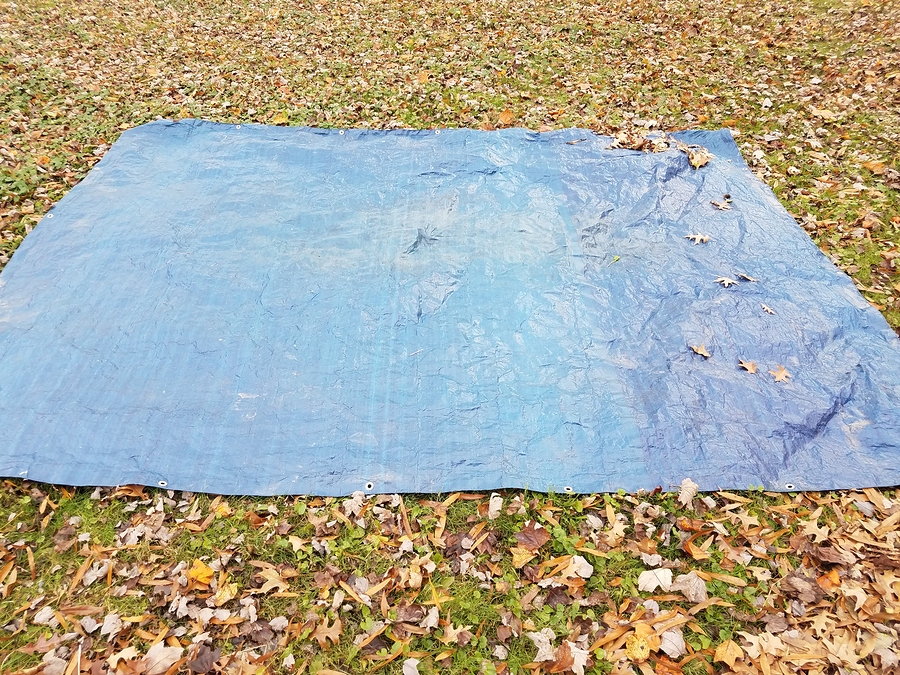Increasing attention to the dangers of toxins in plastics has people worried. You’ve probably heard a lot about toxins that leached into foods from plastic containers that are made with PET, polyethylene, PVC, or styrene. Some like DEHP are carcinogens and increase the cancer risk. Some can impede how well the immune system works and affect child development.
What about tarps? Tarps are often made from plastic so aren’t they risky? If you’re using tarps in a garden setting or exposing your children to it in playgrounds, pools, or outdoor areas, are you putting them at risk? Do tarps leach toxins? It’s very unlikely. We’ll break down why.
It’s Important to Understand How Leaching Happens
Leaching is a process where water or moisture travels through or over a substance and carries small particles of that substance as it flows back out. In the case of plastics, water ends up transporting the chemicals that are used to make plastics. It’s not a fast process. It takes time.
You may have heard of plastic food containers leaching chemicals into the food or beverage. It’s the cold or hot temperatures the containers are exposed to by boiling, microwaving, washing, or freezing that container that causes the breakdown that leads to leaching. It takes some kind of stress to get the chemicals to release.
Take a Look at the Different Types of Plastics
When you’re recycling, you’ve probably noticed the little recycling arrows on plastic items. They range from #1 to #7. The breakdown is:
1 – PET or PETE: Polyethylene terephthalate is used to make rope, clothing fibers, drink bottles, medicine bottles, and some food containers. It can absorb odors and flavors from the things it’s exposed to. It also breaks down over time when exposed to sunlight, cold temperatures, and other factors. This may lead to some leaching.
2 – HDPE: High-density polyethylene is one of the safer forms of plastic as studies find it doesn’t leach chemicals into foods or liquids. You’ll find this type of plastic is often turned into milk jugs, packaging for soaps and other beauty products, and cleaners.
3 – V: Polyvinyl chloride is best known in PVC pipes used for your household plumbing. It’s not a good plastic to have in gardens as it can leach chemicals. Phthalates are the danger with PVC because studies find phthalates damage the kidneys, liver, and lungs in animals.
4 – LDPE: Low-density polyethylene is the plastic you’ll find is used to make sandwich bags, bubble wrap, plastic grocery bags, squeeze bottles, and cling wrap. It’s one of the safer forms of plastic.
5 – PP: Polypropylene is a plastic designed to withstand heat and cold. It’s harder to recycle. It’s what bottle caps, plastic lunch boxes, and syrup bottles are often made from. Some tarps are also made from number 5 plastic. It’s one of the safer plastics to have around gardens and frequently used outdoor spaces.
6 – PS: Polystyrene is the plastic used to make plastic takeout containers, plastic drink cups, packing peanuts or foam, coat hangers, and plastic knives, spoons, and forks.
7 – Other Types: Polycarbonate and polylactide are two of the other plastics that are categorized as number 7. They’re hard to recycle and tend to include discs, reusable bottles, and storage containers. Some of these plastics leach bisphenol A (BPA). BPA is a chemical used in plastics that has been found to impact children’s brains and prostate glands. Mayo Clinic also reports there could be a link between high blood pressure and BPA.
What Are the Safer Tarps to Consider?
Many tarps used in and around the home do not leach anything harmful into water or soil. While leaching from plastics has been studied, there haven’t been studies that find significant leaching from tarps. Those that do have more concerning plastics are still going to be a minimal risk.
These studies that find dangers with food containers and bottles are looking at long-term effects with hours of exposure every day for months and years. Many tarps you use around a home are for short-term projects like painting or shelters from the sun.
Polyethylene tarps are one of the safer options if you’re still worried about leaching. If you choose a tarp that resists water, mold/mildew, and UV rays, it’s best. They’re not going to degrade and leach any chemicals into a garden or backyard space. Heavy-duty tarps are designed to stand up to water, sun, and other weather situations and last years.
If you’re looking for a tarp for a child’s play structure, consider 100% cotton duck canvas. Number 4 cotton duck canvas is an excellent choice for hammocks and chairs. It comes in over a dozen colors too, so you can really make it dress up your backyard space.
Chicago Canvas can help you find the right tarp for your outdoor or indoor use. Give our experts at a call today and let us know how we can help. Reach us online by clicking the live chat button or by calling 1-866-389-2218.





